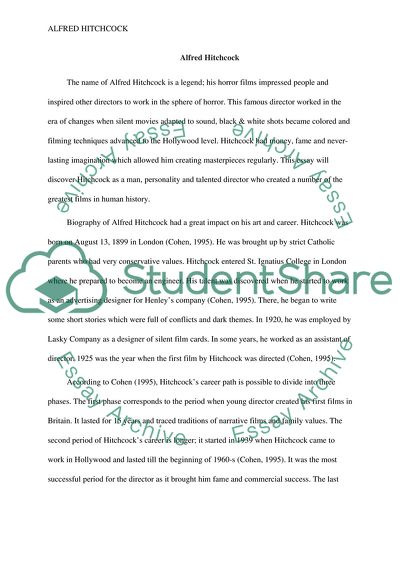Cite this document
(Film Director: Alfred Hitchcock Coursework Example | Topics and Well Written Essays - 1250 words, n.d.)
Film Director: Alfred Hitchcock Coursework Example | Topics and Well Written Essays - 1250 words. https://studentshare.org/visual-arts-film-studies/1835565-film-director-alfred-hitchcock
Film Director: Alfred Hitchcock Coursework Example | Topics and Well Written Essays - 1250 words. https://studentshare.org/visual-arts-film-studies/1835565-film-director-alfred-hitchcock
(Film Director: Alfred Hitchcock Coursework Example | Topics and Well Written Essays - 1250 Words)
Film Director: Alfred Hitchcock Coursework Example | Topics and Well Written Essays - 1250 Words. https://studentshare.org/visual-arts-film-studies/1835565-film-director-alfred-hitchcock.
Film Director: Alfred Hitchcock Coursework Example | Topics and Well Written Essays - 1250 Words. https://studentshare.org/visual-arts-film-studies/1835565-film-director-alfred-hitchcock.
“Film Director: Alfred Hitchcock Coursework Example | Topics and Well Written Essays - 1250 Words”. https://studentshare.org/visual-arts-film-studies/1835565-film-director-alfred-hitchcock.


